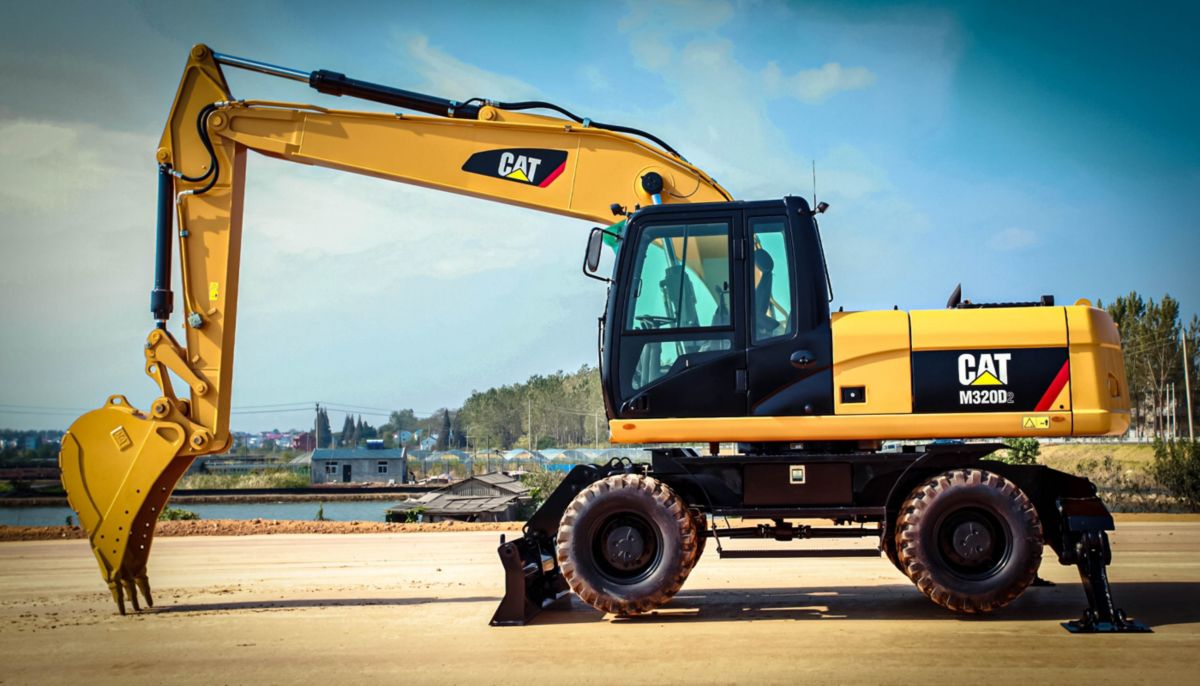Being located in Houston, Texas, MY Equipment offers many track excavators for sale to satisfy the American market. However, as a major exporter of heavy equipment and with their popularity in Europe and other foreign markets, one can often locate a new or used wheel excavator for sale through MY Equipment as well. Whereas Europeans work more commonly in urban settings, Americans tend to work more in rural areas where digging and land clearing is required. To decide which type of excavator better suits a project, one should consider what the machine will be used for and the terrain on which it will be used.
Advantages of Track Excavators
Track excavators are built for high production digging. Sitting on top of tracks makes them very stable machines. The grousers also increase the traction of the machines, and track excavators have a much larger footprint and contact area than their wheeled counterparts as well. The weight of the undercarriage of tracked models is also very significant which adds to the stability of the machine. Finally, tracked models sit lower and have a lower center of gravity than wheeled models. All of these factors make track excavators more powerful diggers than wheeled models. Also, attachments such as crushers, sheers, and hammers can be added for demolition and work in quarries.
Advantages of Wheel Excavators
Wheel excavators are much more versatile than tracked models. By utilizing a quick coupler and various attachments, wheeled excavators are able to complete a wide variety of jobs ranging from digging to tree removal to cutting asphalt to moving concrete barriers to cleaning ditches. Even though they do not have the enormous digging capacity of tracked excavators, wheeled models are much more maneuverable and are able to work in places where tracked machines cannot. Being able to drive on roadways and hard surfaces without doing the damage that track excavators would do makes the wheeled models ideal for work in urban settings requiring travel over paved roads. Also, despite the fact that wheel excavators generally sit higher, stability is not typically an issue. With its outriggers deployed and its blade on the ground, the wheel excavator can be just as stable as the tracked model. Mainly on steeply sloped terrain, the higher center of gravity may present a stability issue.
Transportation and Operating Costs
Whereas a tracked excavator requires a heavy-duty truck or trailer to transport it to a worksite thus increasing expenses and decreasing productivity, a wheeled excavator can drive over paved roads and move much faster. Tracked excavators can only move about 4 to 6 miles per hour and do significant damage to hard surfaces and paved roads, but wheeled models can drive up to 22 miles per hour without damaging the roadways. Also, although wheel excavators tend to have a higher upfront cost, they typically have a lower long-term operating cost than tracked models. The wheels and brakes cost less, last a longer period of time, and are much easier to replace than the undercarriages of tracked machines.
Which is Best?
To conclude, although not as popular in the United States, the wheeled excavator is not just a niche machine as is often believed. The wheel excavator is a very versatile machine that is able to complete a large number of tasks and maintains low operating costs. It is suitable for operators in an urban setting or those whose budget permits purchasing one single, versatile machine. Those requiring high capacity digging in more unpaved areas are better off using a tracked excavator.


 1400 Broadfield Blvd, Houston, TX 77084,
USA.
1400 Broadfield Blvd, Houston, TX 77084,
USA.